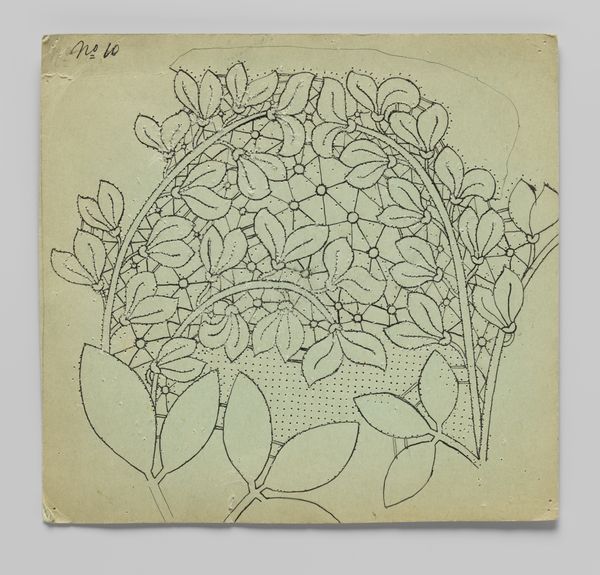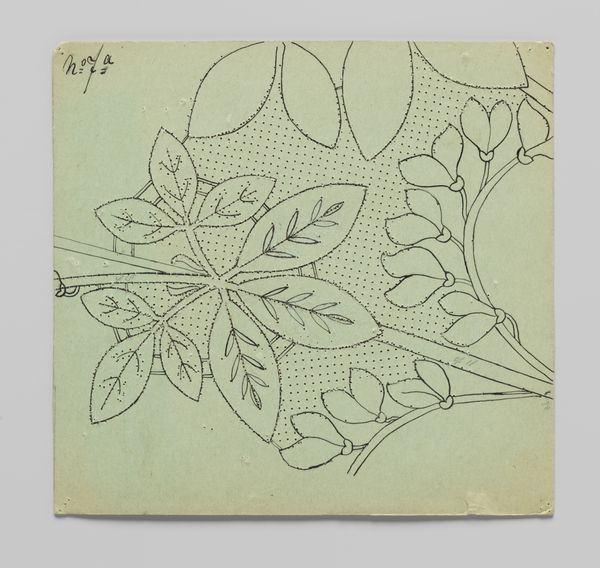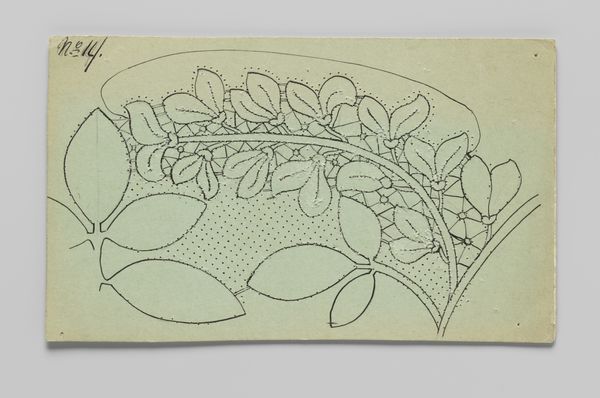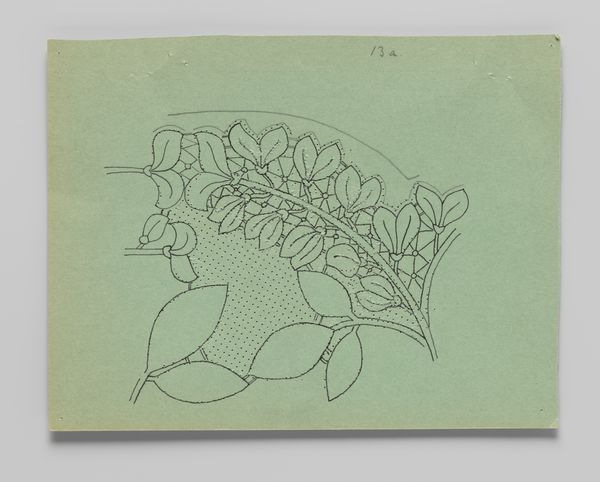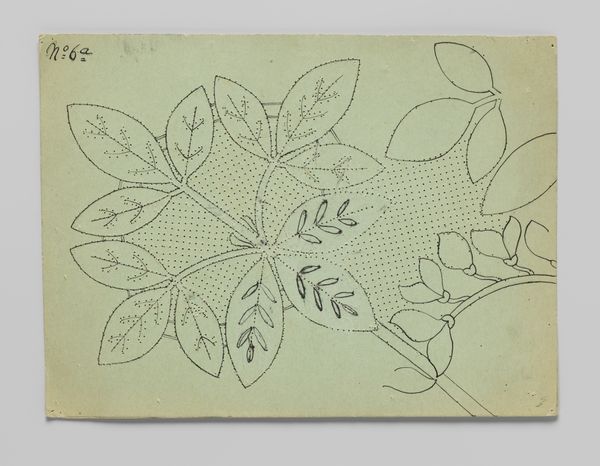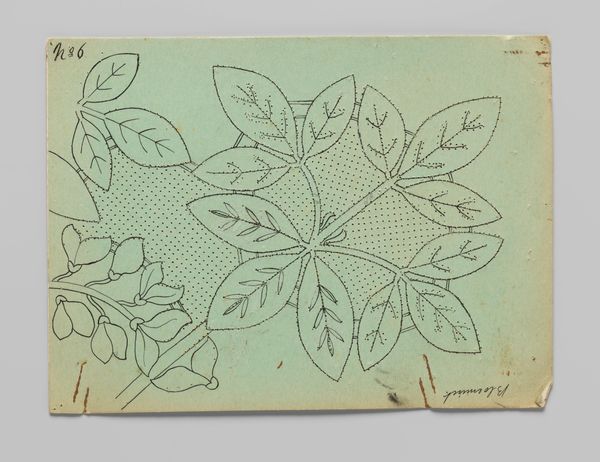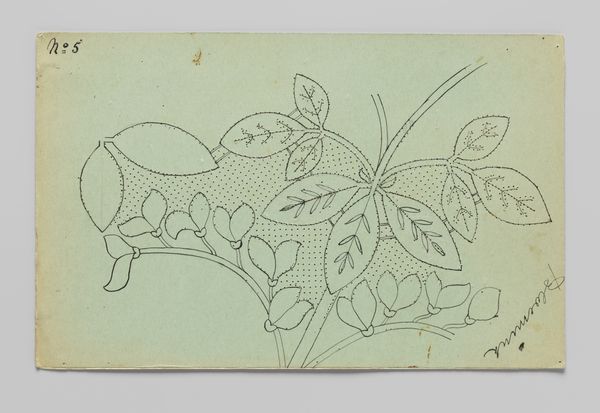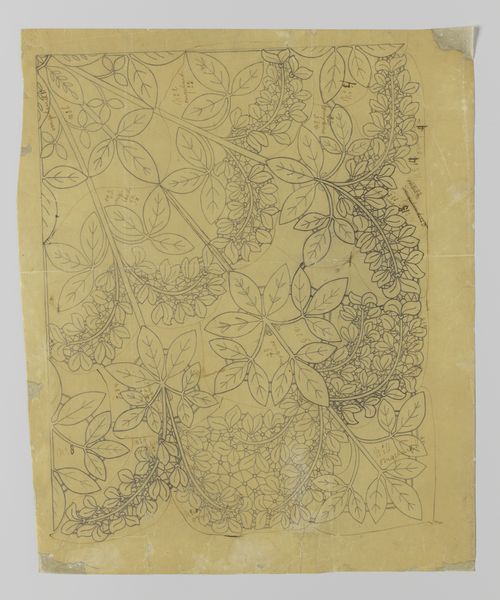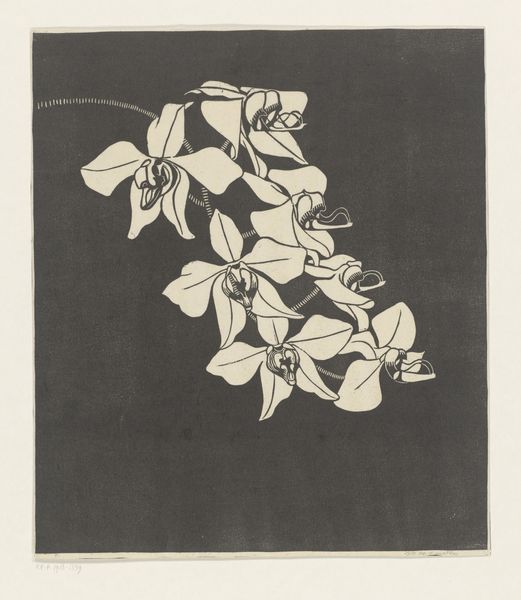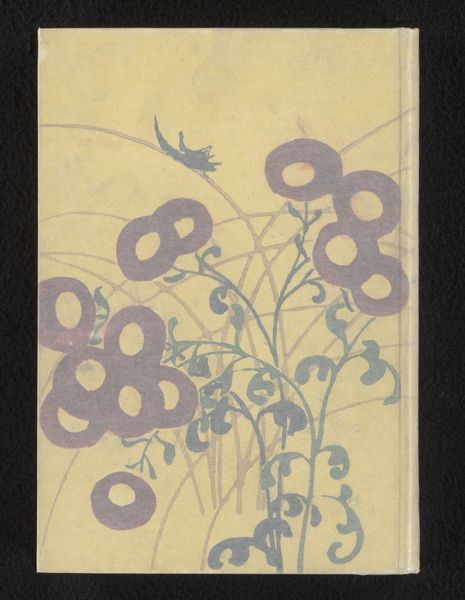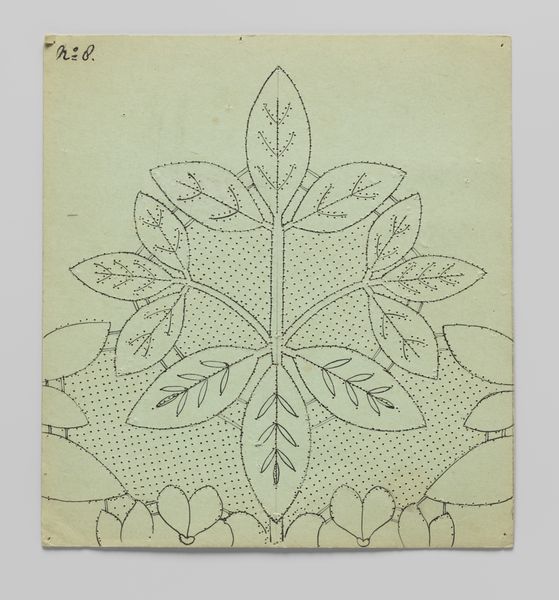
Kantpatroon voor een kleed van kloskant met goudenregentakken en -bloemen c. 1912
0:00
0:00
drawing
#
drawing
#
art-nouveau
#
geometric
#
line
#
decorative-art
Dimensions: length 29 cm, width 23 cm
Copyright: Rijks Museum: Open Domain
Editor: Here we have Louise Wilhelmina van der Meulen-Nulle’s "Kantpatroon voor een kleed van kloskant met goudenregentakken en -bloemen," a drawing from around 1912 that looks like a design for lace. It's so delicate, but also precise and geometric. What strikes you when you look at this piece? Curator: Immediately, I think of the domestic sphere, and the often-unacknowledged labor of women in decorative arts during the early 20th century. We often see 'Art Nouveau' as high art, forgetting how its principles permeated everyday life through textiles, ceramics, and designs like this. It begs the question: whose work gets valued as ‘art’ and whose as mere ‘craft’? Do you think the lack of distinction between art and craft at this time reflects a democratization of artistic expression, particularly for women? Editor: That's a fascinating perspective. I hadn’t considered the societal implications of its classification as craft versus art. But doesn't the intricate detail and evident skill involved elevate it beyond the purely functional? Curator: Precisely. Consider the golden rain branches and flowers. They represent not just a pretty motif, but a negotiation with nature, mediated through a female gaze and translated into a controlled geometric pattern. Think about the time and patience invested, the knowledge of botanical forms needed... And it all feeds into this functional object meant to adorn the home. The Art Nouveau style emphasized organic forms and growth. Could you consider this drawing a challenge to the traditional, masculine art world, with Van der Meulen-Nulle expressing a unique artistic vision? Editor: I see what you mean. It’s like she's quietly subverting expectations. This makes me see the drawing in a completely different light, as something far more politically and culturally charged. Curator: Exactly! It encourages us to reconsider not just the artistic merit, but the socio-political context within which these crafts were created and consumed. What starts as an innocuous design reveals complex intersectional layers if we dig deeper. Editor: This piece definitely challenges the perception of craft as separate from "high" art. Thank you, I now have a much better understanding. Curator: And I'm grateful for your initial observation that led us to this discussion. Every artwork can challenge us to question our preconceived notions.
Comments
No comments
Be the first to comment and join the conversation on the ultimate creative platform.

